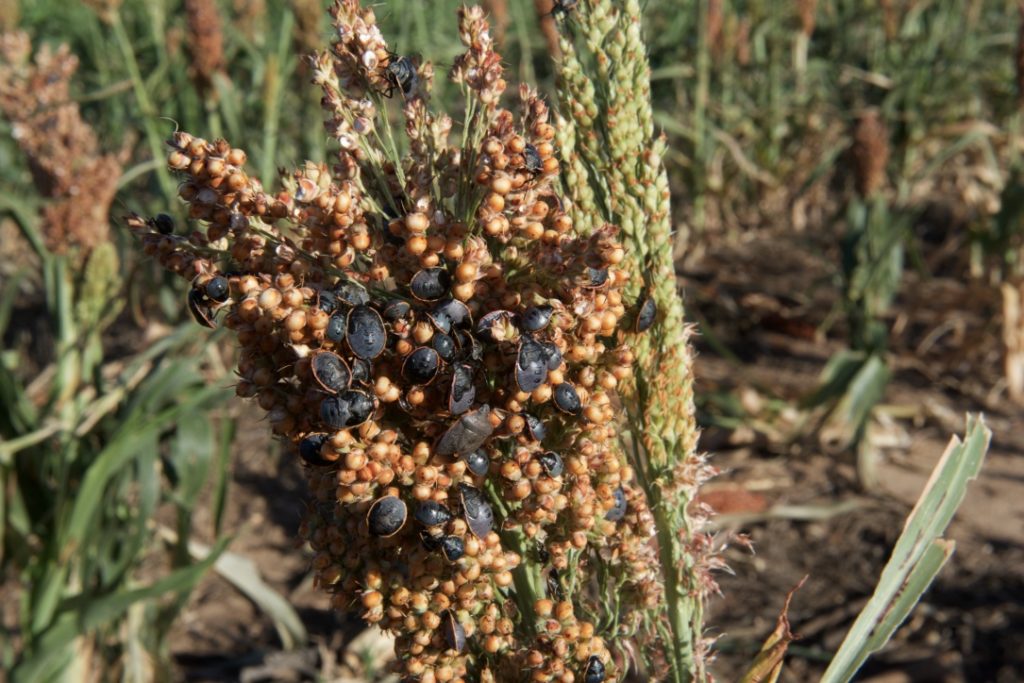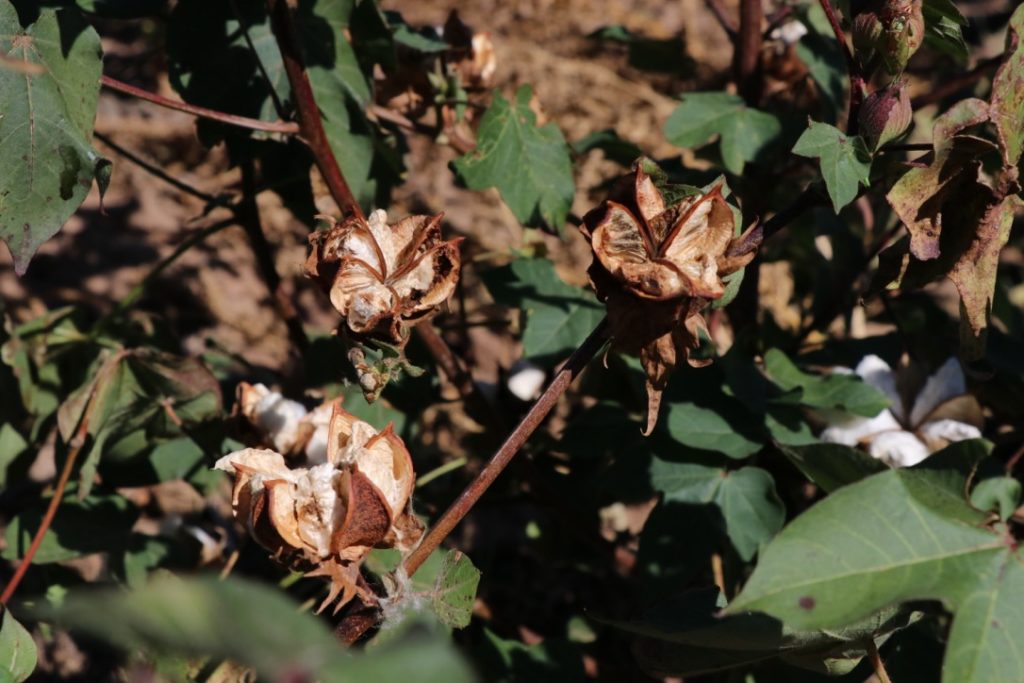by Suhas Vyavhare and Katelyn Kowles
This season we experienced unusually high numbers of conchuela stink bugs in Texas High Plains cotton (parts of eastern Lubbock and Crosby counties in particular). Stink bug numbers peaked during August-September when plants were loaded with tender bolls that stink bugs feed on with their piercing-sucking mouthparts. Farmers who spotted stink bugs early and took timely action are now reaping the benefits. However, those who missed an insecticide application in infested fields are seeing severe stink bug damage now that bolls have opened. A few infested fields we visited last week have very little to harvest due to the extent of boll damage by stink bugs. During August-September, stink bug numbers were overwhelmingly high in spots—in some fields numbers wereover 2-3 stink bugs per boll (Figure 1). When stink bugs feed on tender bolls, it can result in lint staining or allow pathogens to enter and cause boll rot (Figure 2); smaller bolls may be aborted altogether. As we are now towards the end of the growing season, there are many who want to know what can be done differently for the next season.
The fact is there is not much we can do beforehand when it comes to stink bugs as there are no specific effective cultural practices or resistant varieties available. The best thing farmers can do is regular field scouting. Bolls that have been fed on by stink bugs will typically have a black mark on the outside (Figure 3). It is critical to scout fields for stink bugs especially in areas with the known history of this pest. Our field observations indicate that stink bug population build-up started on grain sorghum and as the grain became too hard for the bugs to pierce with their mouthparts, they moved to adjacent cotton (Figure 4). We will provide more information on stink bug scouting and management when we approach the next growing season. Meanwhile, as we wrap up the current season, the best thing we can do is learn from our experience and scout better next time.
 Figure 3. Stink bug feeding signs on cotton boll.
Figure 3. Stink bug feeding signs on cotton boll.
 Figure 4. Stink bug infestation in grain sorghum.
Figure 4. Stink bug infestation in grain sorghum.

Dr. Suhas Vyavhare
Assistant Professor & Extension Entomologist
Texas A&M AgriLife Extension Service
Lubbock TX
806-220-4228
suhas.vyavhare@ag.tamu.edu

